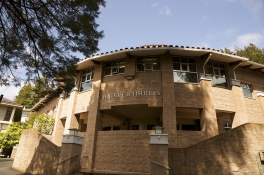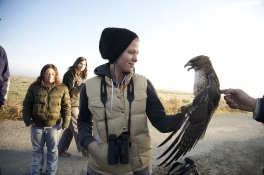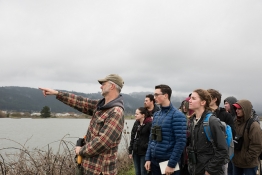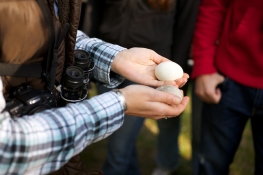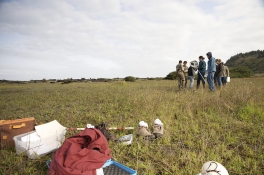Shaun Thornton
Despite this dramatic population increase since the last management plan was implemented there may be less complaints with farmers saying that the geese have been ‘distributing themselves’ evenly on the landscape without the need for hazing. This study aims to describe the spatial and temporal distribution of the Aleutian goose in terms of landscape features and the influence of the ‘disturbance management’ strategy that has been in practice for the last 15 years. My objectives are to: 1) model patterns of Aleutian goose distribution while foraging and roosting in relation to habitat, spatial landscape features, and sources of disturbance; 2) assess birds’ habituation or lack thereof to the management plan and late season hunt; and 3) quantify goose body condition in relation to disturbance level, thus enabling a comparison with historic patterns (Mini and Black 2009; Spragens et al. 2015). A reassessment of the Aleutian goose’s spatial and temporal distribution during spring staging may provide managers with insight on carrying capacity for the region and habitat requirements vital to successful management.
Began Spring, 2021 and finished 2023.

